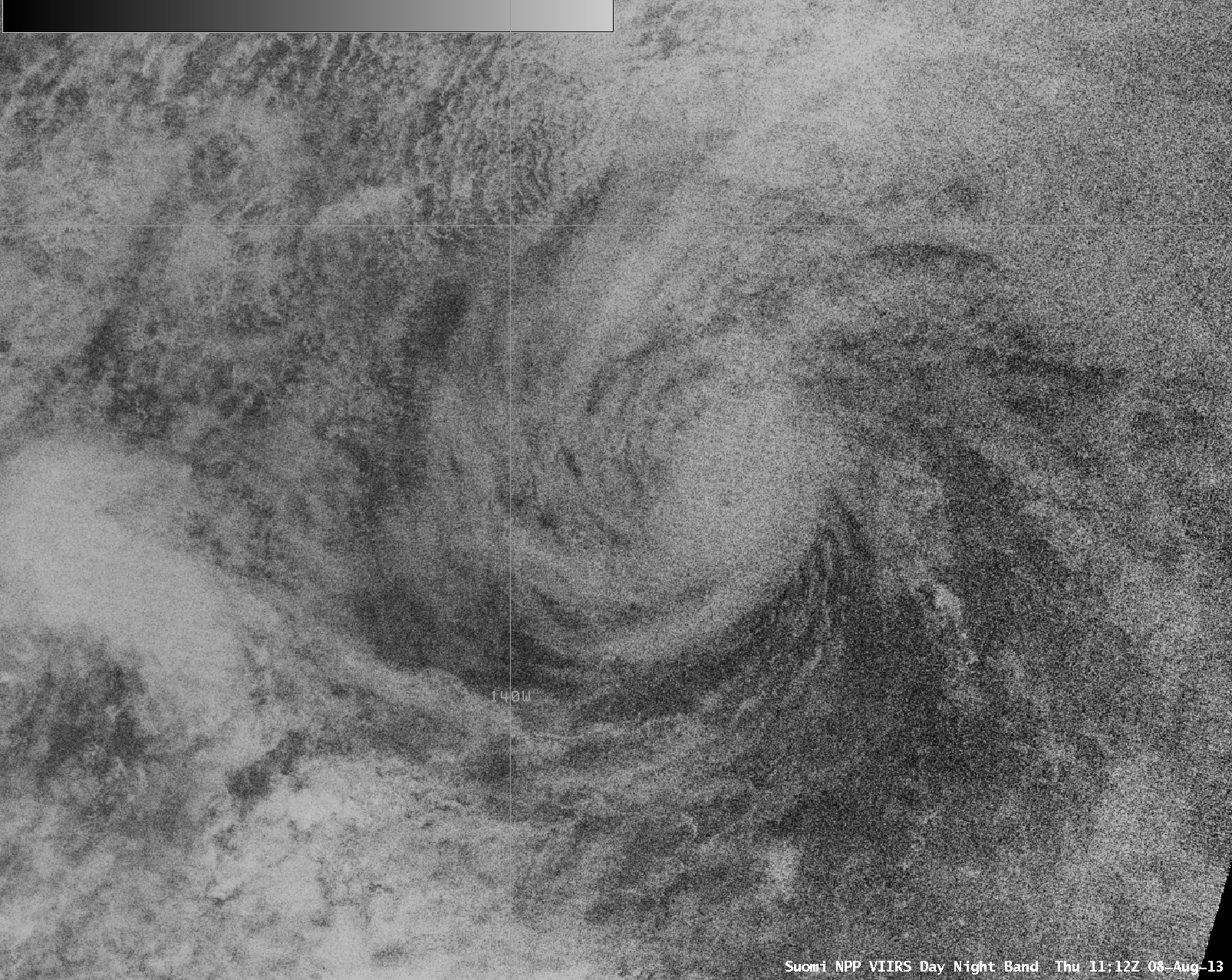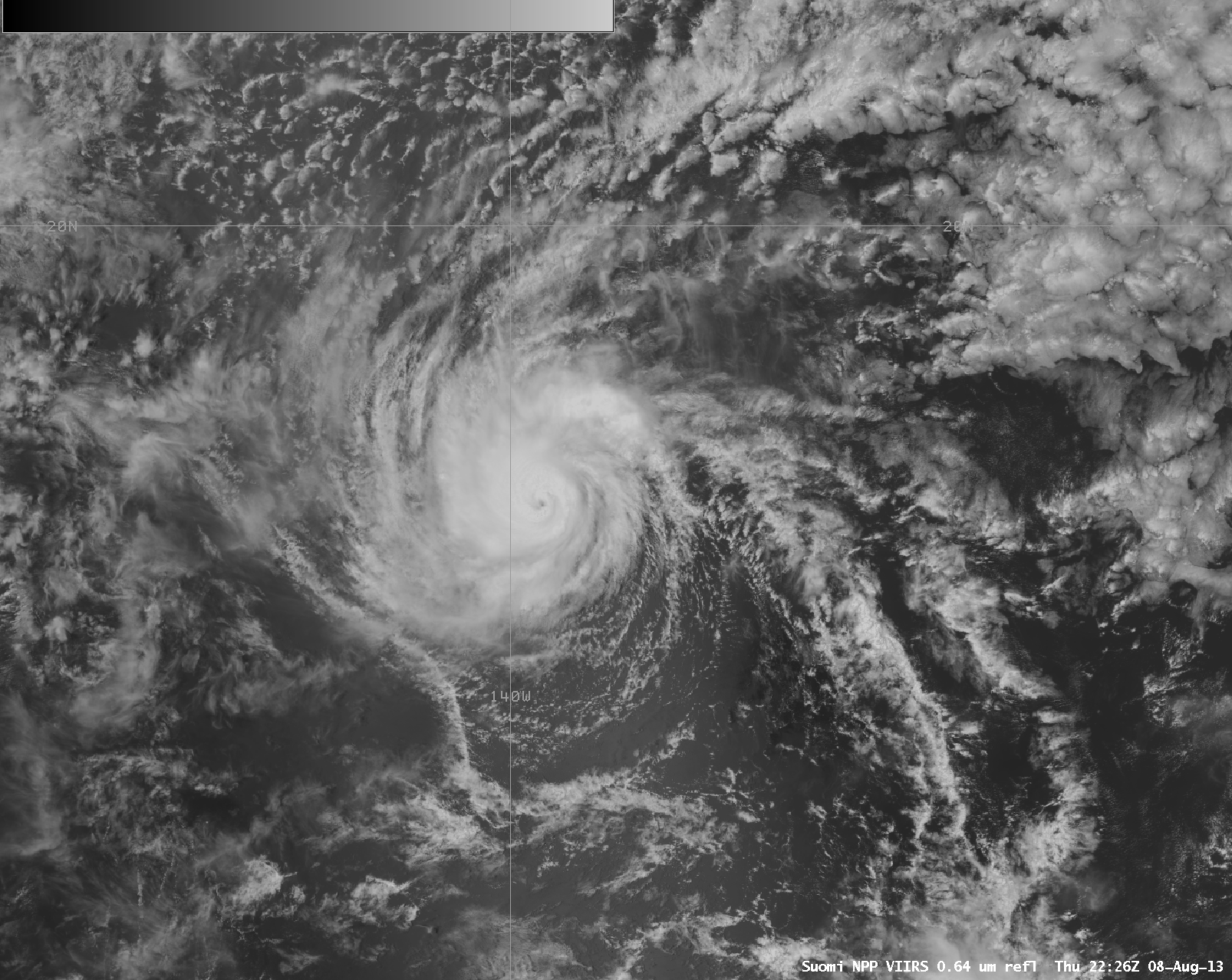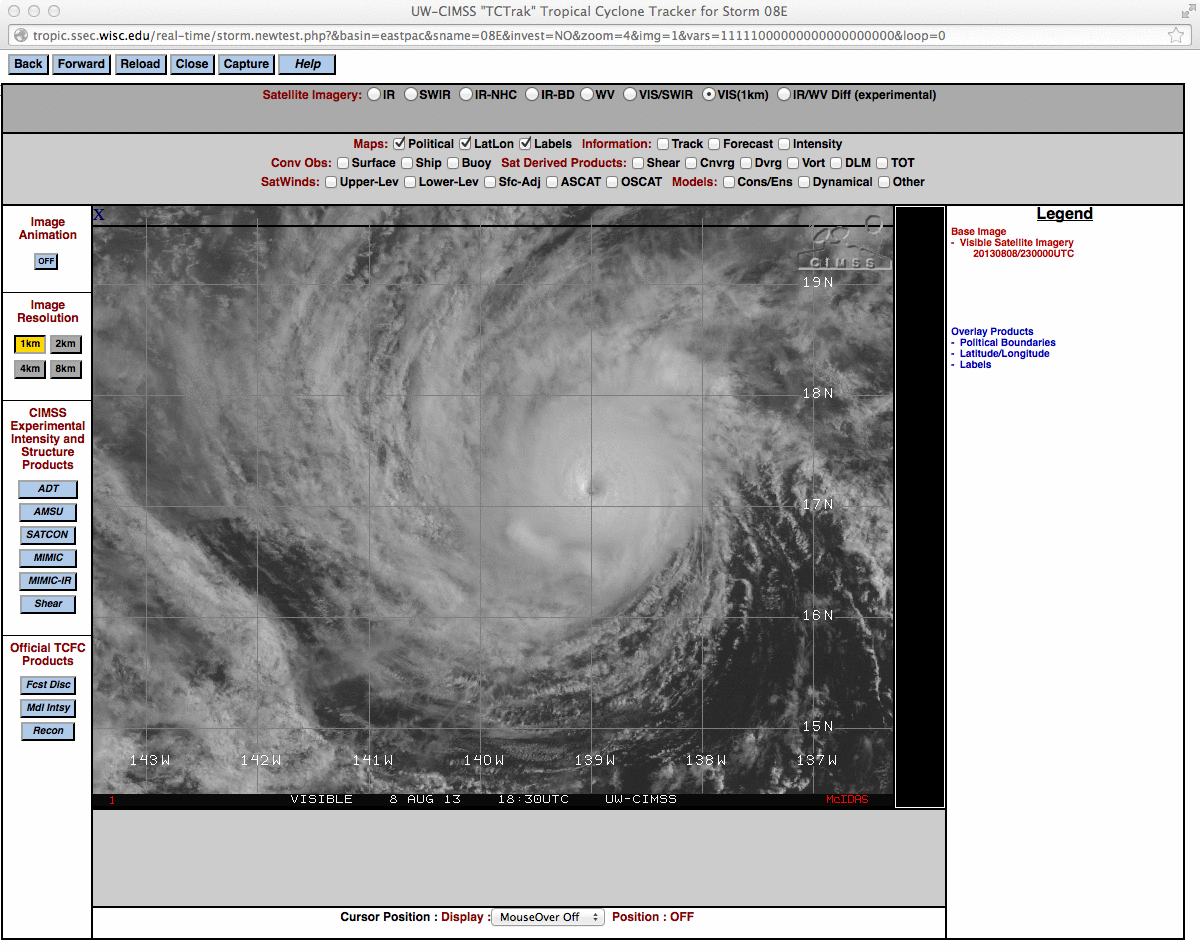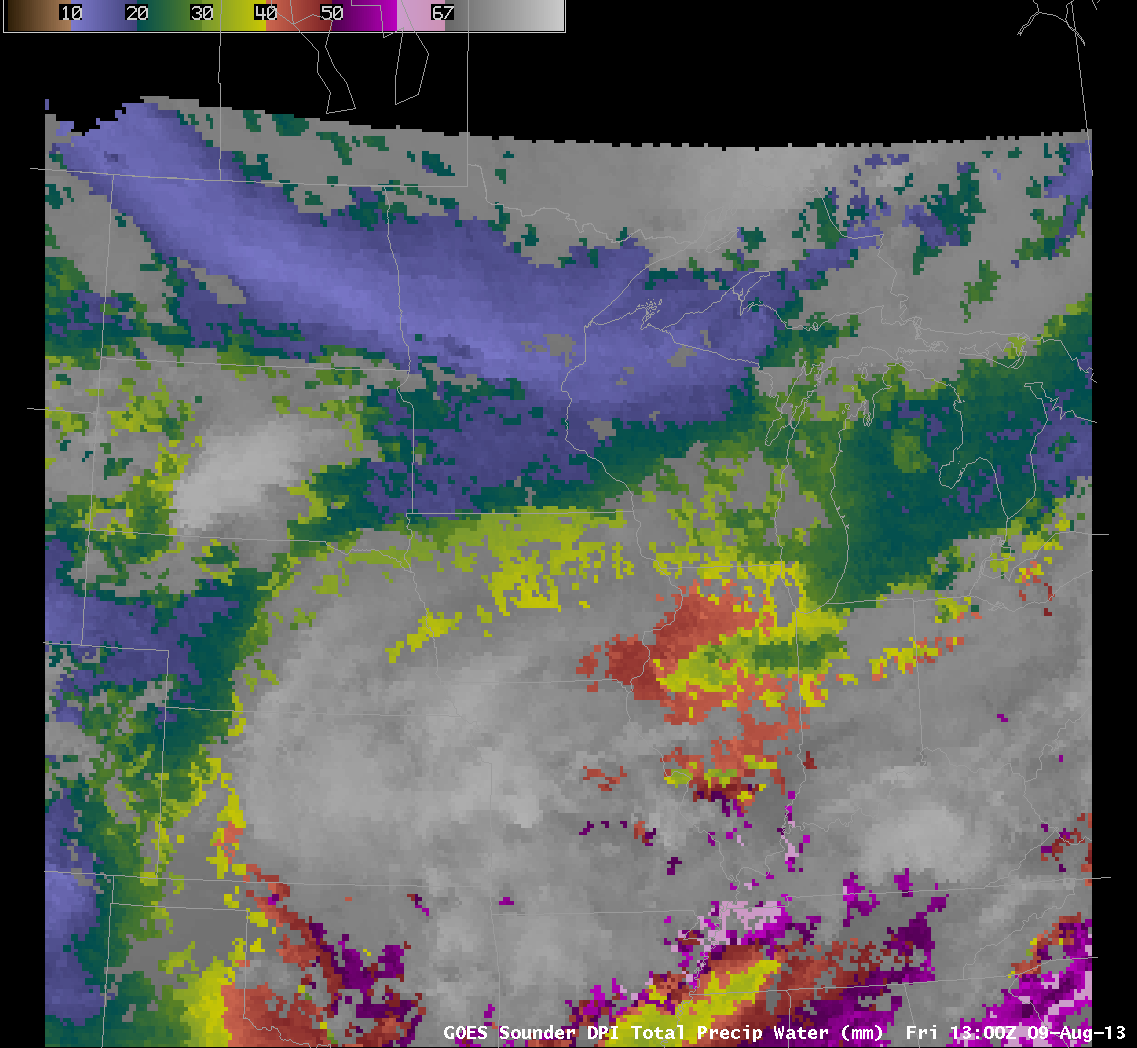GOES-15 (left) and GOES-13 (right) 0.63 µm visible channel and 3.9 µm shortwave IR channel images (click image to play animation)
A cluster of 4 major fire complexes (the Elk, Pony, McCan, and Beaver complexes) began to exhibit extreme fire behavior on during the afternoon and evening hours on 10 August 2013. A comparison of GOES-15 (GOES-West) and GOES-13 (GOES-East) 1-km resolution 0.63 µm visible channel and 4-km resolution 3.9 µm shortwave IR images (above; click image to play animation) showed 2 different perspectives of the many dense smoke plumes and the eventual development of a well-defined pyrocumulonimbus (pyroCb) cloud whose source appeared to be the Pony Complex. On the shortwave IR images, the hottest fire pixels are enhanced red.
The corresponding 4-km resolution GOES-15 and GOES-13 10.7 µm IR channel images (below; click image to play animation) revealed that the pyroCb cloud first began to exhibit IR brightness temperatures colder than -20 C (cyan color enhancement) after 20:00 UTC or 1:00 PM local time, -40 C (green color enhancement) after 20:20 UTC or 1:30 PM local time, and -60 C (darker red color enhancement) after 00:30 UTC or 6:30 PM local time.
Several hours later, a comparison of 1-km resolution Suomi NPP VIIRS 3.74 µm and 4-km resolution GOES-13 3.9 µm shortwave IR images just after 4 AM local time (below) demonstrated the advantage of higher spatial resolution for detecting the true location of fire “hot spots” (black to yellow to red color enhancement). Note that there is also a significant westward displacement of the largest hot spot cluster on the GOES-13 image — there is a known navigation error with the GOES 3.9 µm channel imagery, which is in the process of being corrected.
View only this post Read Less














